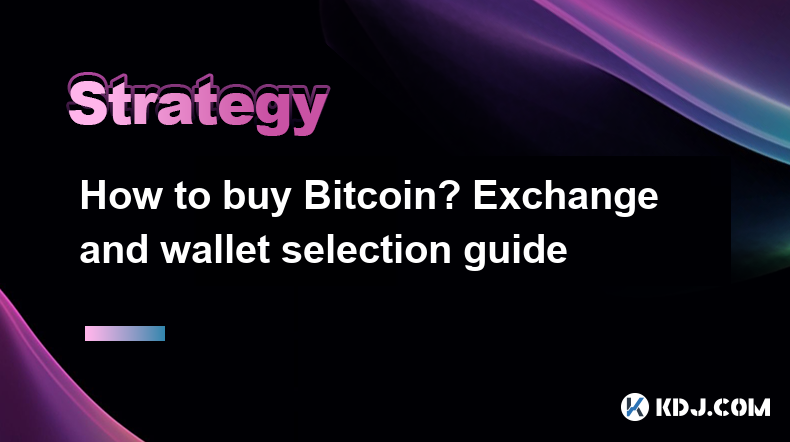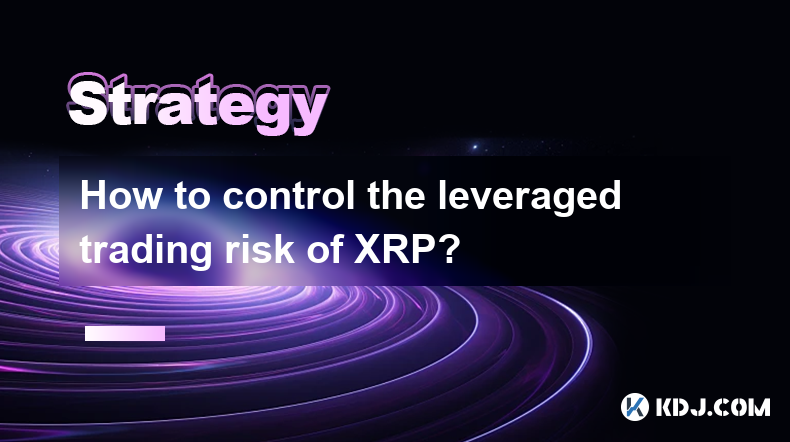-
 Bitcoin
Bitcoin $84,512.3183
-0.50% -
 Ethereum
Ethereum $1,588.1225
0.23% -
 Tether USDt
Tether USDt $0.9996
-0.01% -
 XRP
XRP $2.0642
0.48% -
 BNB
BNB $591.8173
0.47% -
 Solana
Solana $134.4792
-0.11% -
 USDC
USDC $0.9999
0.01% -
 Dogecoin
Dogecoin $0.1574
2.08% -
 TRON
TRON $0.2420
-2.16% -
 Cardano
Cardano $0.6293
2.51% -
 UNUS SED LEO
UNUS SED LEO $9.2288
1.66% -
 Chainlink
Chainlink $12.6112
1.23% -
 Avalanche
Avalanche $19.1082
0.52% -
 Toncoin
Toncoin $2.9983
2.24% -
 Stellar
Stellar $0.2408
0.84% -
 Shiba Inu
Shiba Inu $0.0...01225
4.64% -
 Hedera
Hedera $0.1660
2.02% -
 Sui
Sui $2.1233
0.65% -
 Bitcoin Cash
Bitcoin Cash $337.9337
1.98% -
 Litecoin
Litecoin $75.8547
1.24% -
 Polkadot
Polkadot $3.6527
0.78% -
 Hyperliquid
Hyperliquid $16.9003
-0.50% -
 Dai
Dai $1.0000
0.02% -
 Bitget Token
Bitget Token $4.4061
1.14% -
 Ethena USDe
Ethena USDe $0.9992
0.01% -
 Pi
Pi $0.6465
4.78% -
 Monero
Monero $214.7733
-0.74% -
 Uniswap
Uniswap $5.1912
0.85% -
 Pepe
Pepe $0.0...07309
1.65% -
 OKB
OKB $50.3150
0.15%
How to buy Bitcoin? Exchange and wallet selection guide
To buy Bitcoin, choose a secure exchange like Coinbase or Binance, set up a wallet (hardware for safety), and transfer your Bitcoin there after purchase.
Apr 09, 2025 at 01:56 pm

Buying Bitcoin involves several key steps, including choosing the right exchange, setting up a wallet, and executing the purchase. This guide will walk you through the process of selecting a suitable exchange and wallet, and then buying Bitcoin securely.
Understanding Bitcoin and Its Importance
Before diving into the specifics of buying Bitcoin, it's important to understand what Bitcoin is and why it's significant. Bitcoin is the first and most well-known cryptocurrency, created in 2009 by an anonymous person or group using the pseudonym Satoshi Nakamoto. It operates on a decentralized network using blockchain technology, which ensures transparency and security. Bitcoin's importance lies in its potential to serve as a digital store of value, a medium of exchange, and a hedge against inflation.
Choosing the Right Exchange
Selecting an exchange is a crucial step in buying Bitcoin. An exchange is a platform where you can buy, sell, or trade cryptocurrencies. Here are some factors to consider when choosing an exchange:
- Security: Look for exchanges with robust security measures, such as two-factor authentication (2FA), cold storage for funds, and a history of no major security breaches.
- Fees: Exchanges charge fees for transactions, deposits, and withdrawals. Compare the fee structures of different exchanges to find one that offers competitive rates.
- User Interface: A user-friendly interface can make your trading experience more enjoyable and less prone to errors.
- Reputation and Regulation: Choose exchanges with a good reputation and that are regulated by financial authorities, as this can offer additional protection for your funds.
- Liquidity: High liquidity ensures that you can buy or sell Bitcoin quickly without significantly affecting the market price.
Some popular exchanges include Coinbase, Binance, and Kraken. Each has its strengths and weaknesses, so it's essential to research and compare them before making a decision.
Setting Up a Wallet
A wallet is where you will store your Bitcoin. There are several types of wallets, each with its own level of security and convenience:
- Hardware Wallets: These are physical devices that store your Bitcoin offline, offering the highest level of security. Examples include Ledger and Trezor.
- Software Wallets: These are applications that you install on your computer or smartphone. They are more convenient than hardware wallets but less secure. Examples include Exodus and Electrum.
- Web Wallets: These are online wallets provided by exchanges or third-party services. They are the most convenient but also the least secure. Examples include Coinbase Wallet and Blockchain.com Wallet.
- Paper Wallets: These are physical documents that contain your Bitcoin private keys. They are secure if stored properly but can be lost or damaged.
To set up a wallet, follow these steps:
- Choose a Wallet Type: Decide which type of wallet best suits your needs based on security and convenience.
- Download or Purchase: If you choose a hardware or software wallet, download the software or purchase the device from the manufacturer's official website.
- Install and Set Up: Follow the manufacturer's instructions to install the software or set up the hardware wallet. This usually involves creating a new wallet and backing up your recovery phrase.
- Secure Your Wallet: Enable all available security features, such as 2FA, and store your recovery phrase in a safe place.
Buying Bitcoin on an Exchange
Once you have chosen an exchange and set up a wallet, you can proceed to buy Bitcoin. Here's how:
- Sign Up and Verify Your Account: Create an account on the exchange and complete the verification process, which may require you to provide personal information and identification documents.
- Deposit Funds: Deposit fiat currency (such as USD or EUR) into your exchange account using a bank transfer, credit card, or other supported payment methods.
- Place an Order: Navigate to the trading section of the exchange and place a buy order for Bitcoin. You can choose between a market order, which buys Bitcoin at the current market price, or a limit order, which buys Bitcoin at a specified price.
- Transfer Bitcoin to Your Wallet: Once the purchase is complete, transfer your Bitcoin from the exchange to your personal wallet for added security.
Ensuring Security and Best Practices
Security is paramount when dealing with cryptocurrencies. Here are some best practices to follow:
- Use Strong Passwords: Use a unique and strong password for your exchange and wallet accounts.
- Enable Two-Factor Authentication (2FA): This adds an extra layer of security to your accounts.
- Keep Software Updated: Regularly update your wallet software and exchange apps to protect against vulnerabilities.
- Beware of Phishing: Be cautious of emails or messages that ask for your private keys or recovery phrases. Always verify the source before responding.
- Use Cold Storage: For long-term storage, consider using a hardware wallet to keep your Bitcoin offline and secure.
Frequently Asked Questions
Q: Can I buy Bitcoin anonymously?
A: While some exchanges offer options for anonymous trading, most reputable exchanges require some form of identity verification to comply with regulations. Using a decentralized exchange (DEX) or peer-to-peer platforms might offer more privacy, but they come with their own set of risks and complexities.
Q: How much Bitcoin should I buy?
A: The amount of Bitcoin you should buy depends on your investment goals, risk tolerance, and financial situation. It's advisable to start with a small amount that you can afford to lose, as the cryptocurrency market can be highly volatile.
Q: What are the tax implications of buying Bitcoin?
A: The tax treatment of Bitcoin varies by country. In many jurisdictions, Bitcoin is treated as a capital asset, and any gains from selling it may be subject to capital gains tax. It's important to consult with a tax professional to understand your specific tax obligations.
Q: Can I buy Bitcoin with a credit card?
A: Yes, many exchanges allow you to buy Bitcoin with a credit card. However, this method often comes with higher fees and may be subject to limits set by the credit card issuer. Always check the terms and conditions of the exchange and your credit card provider before proceeding.
Disclaimer:info@kdj.com
The information provided is not trading advice. kdj.com does not assume any responsibility for any investments made based on the information provided in this article. Cryptocurrencies are highly volatile and it is highly recommended that you invest with caution after thorough research!
If you believe that the content used on this website infringes your copyright, please contact us immediately (info@kdj.com) and we will delete it promptly.
- 3 Cryptos Heating Up, But This Time, Price-Conscious Buyers Are Stealing the Spotlight
- 2025-04-19 09:15:13
- This Week in Bitcoin: BTC Remains Stable Around $84k
- 2025-04-19 09:15:13
- Decentralized economy isn't always that decentralized
- 2025-04-19 09:10:13
- DIA to Host an AMA on X on April 23rd at 16:00 UTC
- 2025-04-19 09:10:13
- American Asset Management Company Canary Capital Has Taken a New Leap
- 2025-04-19 09:05:13
- Canary Capital Files to Launch the First US-Listed ETF Focused on Tron's TRX Token That Includes the Staking Feature
- 2025-04-19 09:05:13
Related knowledge

What does SHIB's Cardano coefficient below 0.3 indicate?
Apr 19,2025 at 08:00am
What does SHIB's Cardano coefficient below 0.3 indicate? The Cardano coefficient, often used within the cryptocurrency community, is a metric that helps investors and analysts understand the correlation between different cryptocurrencies. When it comes to SHIB (Shiba Inu) and its Cardano coefficient falling below 0.3, this indicates a relatively low cor...

Should I reverse the operation when the long-short ratio of SHIB perpetual contract reaches 3:1?
Apr 19,2025 at 04:36am
Understanding the Long-Short Ratio in SHIB Perpetual ContractsThe long-short ratio is a key metric in the world of cryptocurrency trading, particularly when dealing with perpetual contracts. For SHIB (Shiba Inu) perpetual contracts, this ratio indicates the balance between traders who are betting on the price of SHIB to rise (long positions) and those b...

Where is the average cost line for short-term holders of SHIB?
Apr 19,2025 at 03:42am
The average cost line for short-term holders of SHIB, or Shiba Inu cryptocurrency, is a critical indicator that provides insights into the behavior and sentiment of investors who have held the token for a shorter duration. This line represents the average price at which these short-term holders acquired their SHIB tokens. Understanding where this line s...

What should I do after the head and shoulders top pattern of XRP appears?
Apr 19,2025 at 01:28am
The head and shoulders top pattern is a significant technical analysis indicator that many traders and investors in the cryptocurrency market, including those involved with XRP, pay close attention to. When this pattern appears in the price chart of XRP, it is often interpreted as a bearish signal, suggesting that a reversal in the current uptrend may b...

What does it mean for XRP to confirm the breakout of the previous high and then step back?
Apr 19,2025 at 04:42am
What does it mean for XRP to confirm the breakout of the previous high and then step back? In the world of cryptocurrency, technical analysis plays a crucial role in understanding market movements and potential future trends. One specific scenario that traders and investors often analyze is when a cryptocurrency, such as XRP, confirms the breakout of a ...

How to control the leveraged trading risk of XRP?
Apr 18,2025 at 09:50pm
Leveraged trading of XRP, like any other cryptocurrency, involves significant risk due to the high volatility of the market. Understanding and controlling these risks is crucial for any trader looking to engage in leveraged trading. This article will guide you through the essential steps and strategies to manage the risks associated with leveraged tradi...

What does SHIB's Cardano coefficient below 0.3 indicate?
Apr 19,2025 at 08:00am
What does SHIB's Cardano coefficient below 0.3 indicate? The Cardano coefficient, often used within the cryptocurrency community, is a metric that helps investors and analysts understand the correlation between different cryptocurrencies. When it comes to SHIB (Shiba Inu) and its Cardano coefficient falling below 0.3, this indicates a relatively low cor...

Should I reverse the operation when the long-short ratio of SHIB perpetual contract reaches 3:1?
Apr 19,2025 at 04:36am
Understanding the Long-Short Ratio in SHIB Perpetual ContractsThe long-short ratio is a key metric in the world of cryptocurrency trading, particularly when dealing with perpetual contracts. For SHIB (Shiba Inu) perpetual contracts, this ratio indicates the balance between traders who are betting on the price of SHIB to rise (long positions) and those b...

Where is the average cost line for short-term holders of SHIB?
Apr 19,2025 at 03:42am
The average cost line for short-term holders of SHIB, or Shiba Inu cryptocurrency, is a critical indicator that provides insights into the behavior and sentiment of investors who have held the token for a shorter duration. This line represents the average price at which these short-term holders acquired their SHIB tokens. Understanding where this line s...

What should I do after the head and shoulders top pattern of XRP appears?
Apr 19,2025 at 01:28am
The head and shoulders top pattern is a significant technical analysis indicator that many traders and investors in the cryptocurrency market, including those involved with XRP, pay close attention to. When this pattern appears in the price chart of XRP, it is often interpreted as a bearish signal, suggesting that a reversal in the current uptrend may b...

What does it mean for XRP to confirm the breakout of the previous high and then step back?
Apr 19,2025 at 04:42am
What does it mean for XRP to confirm the breakout of the previous high and then step back? In the world of cryptocurrency, technical analysis plays a crucial role in understanding market movements and potential future trends. One specific scenario that traders and investors often analyze is when a cryptocurrency, such as XRP, confirms the breakout of a ...

How to control the leveraged trading risk of XRP?
Apr 18,2025 at 09:50pm
Leveraged trading of XRP, like any other cryptocurrency, involves significant risk due to the high volatility of the market. Understanding and controlling these risks is crucial for any trader looking to engage in leveraged trading. This article will guide you through the essential steps and strategies to manage the risks associated with leveraged tradi...
See all articles
























































































